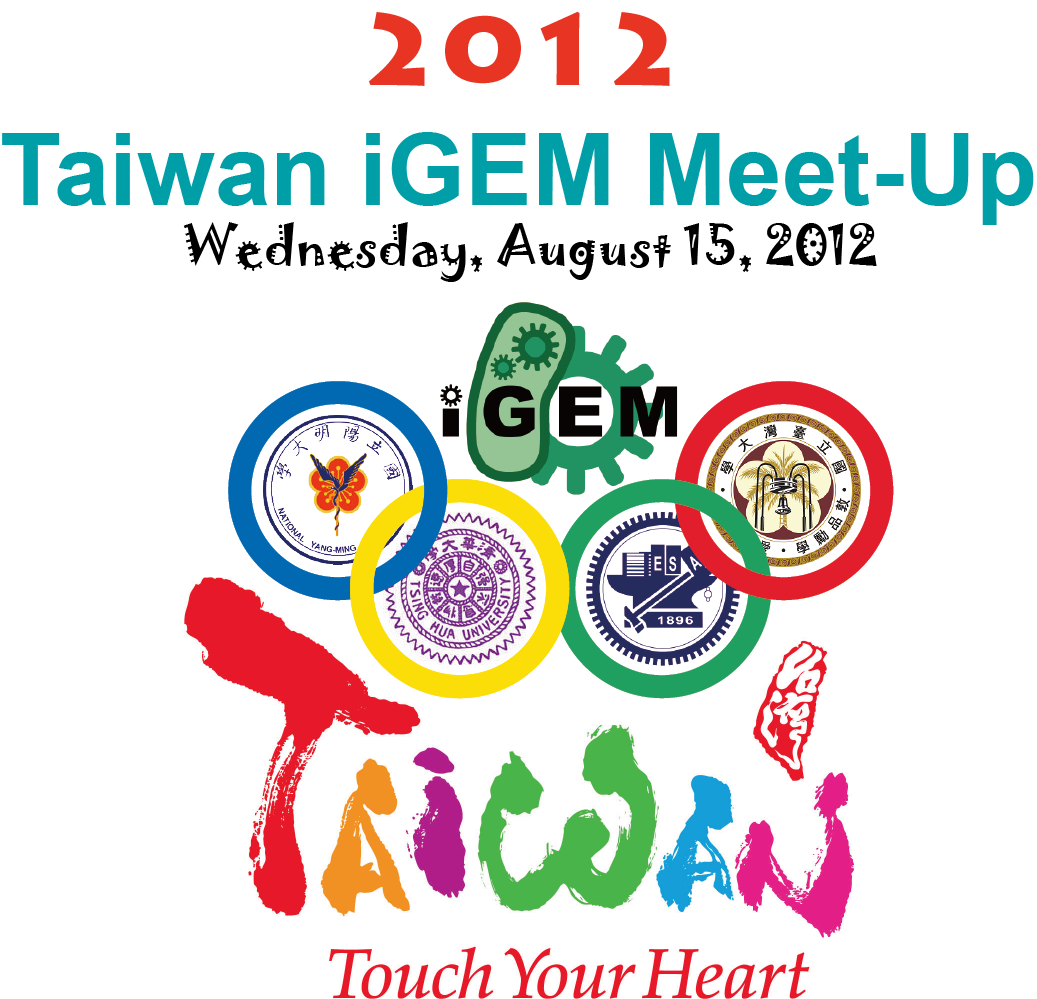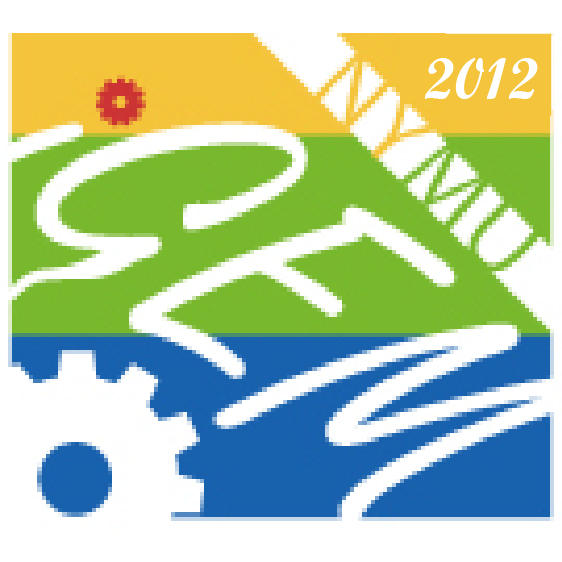Team:NYMU-Taipei
From 2012.igem.org
(→1. Would any of your project ideas raise safety issues in terms of:) |
(→4. Do you have any other ideas how to deal with safety issues that could be useful for future iGEM competitions? How could parts, devices and systems be made even safer through biosafety engineering?) |
||
| Line 79: | Line 79: | ||
====4. Do you have any other ideas how to deal with safety issues that could be useful for future iGEM competitions? How could parts, devices and systems be made even safer through biosafety engineering? ==== | ====4. Do you have any other ideas how to deal with safety issues that could be useful for future iGEM competitions? How could parts, devices and systems be made even safer through biosafety engineering? ==== | ||
| - | + | Soil Cleaner, our sub-project about collecting Cadmium, contains several interesting design to avoid gene flow and limit the leakage of artificial organisms into environment. To deal with unwanted gene exchange, we took advantage of previous biobricks and put the engineered E. coli into created apartments inside amoeba. As for constraining the Soil Cleaner in the contaminated area, a death switch is designed to restrict amoeba from migrating to nature. The details of these designs would be available on our Project pages. Furthermore, instead of using traditional endogenous plasmids to transformed cyanobacteria, we cloned our biobricks into vectors that will recombine with homologous genomic DNA alternatively. Thus, horizontal gene transfer is avoided and improve the security and safety of our project. | |
Revision as of 08:17, 7 September 2012
Our iGEM Project:* Nitrogen Metabolism With an eye to combat the environmental issues related to nitrogen oxides, we have designed circuits that can produce nitrogen oxides reductases and transcriptional regulators into our organisms so that harmful nitrogen oxides can be reduced to nitrogen. Combined with the sulfur metabolism pathway and Calvin cycle that are inherent in cyanobacteria, we provide an eco-friendly, multi-function solution to the air pollution problem. This is a promising project with huge commercialized potential since the mass production of bioreactors full of our organisms is foreseeable. What is more interesting, with the help of division inhibitor, gene for invasion, we can install our designation into human cells as artificial organelles and grant human being the ability to survive in extreme environments such as Venus without wearing bulky space suits.
We all know that sulfide dioxides are one of the pollutants in urban area globally. In addition, sulfide compounds also exist on Venus. Therefore, we first think about how to reduce the sulfide dioxides in the atmosphere on earth; then we can move our project further on Venus. Our plan is to develop a system which can reduce the SO2 into H2S using the genes in microorganisms like sulfate reducing bacteria, such as Desulfovibrio desulfuricans. After we acquire H2S, we may use bacteria such as Oscillatoria limnetica, Rhodobacter capsulatus, and Cyanobacteria PCC7002 which contain Sulfide-quinone reductase(SQR).By using SQR, we can then use H2S as the reducing energy and can get carbohydrates such as glucose, and can provide them as the energy for creatures to survive.
Every year, iGEMers create plenty of bioparts. They code for peptides, proteins or composite parts for all kinds of functions. However, they are just DNA sequences. But what if we create parts at the scale of organelles? With this approach, we can implant any cells into the host depending on what kinds of functions we hope to see in it. Comparing with transforming cells using merely simple DNA sequence, implanting new organelles can bring more complicated functions and more precise controlling systems. We can dream about making eukaryote to fix nitrogen, reduced sulfite, or even making animals to photosynthesize! Or we can create organisms that can live in other planets! |
Responses to Safety Questions
1. Would any of your project ideas raise safety issues in terms of:
- researcher safety,
- public safety, or
- environmental safety
Our projects are mainly associated with pollutent reduction and endosymbiosis. For discussing the safety issues connected with our project, this assessment will start by listing the organisms and biobricks we use, and develop in compliance with the guideline of iGEM Safety page correspondingly. The following organisms are species which we derived our biobricks from or practiced transformation and cloning. This list includes Desulfovibrio desulfuricans, Pseudomonas aeruginosa PAO1, Dictyostelium discoideum, Escherichia coli, Synechocystis sp. PCC 6803, Synechococcus elongatus PCC7942 and Synechococcus sp. PCC7002. None of the listed organisms is pathogens. On top of these new biobricks, we used some previous parts. Without a doubt, these parts from iGEM kits are considerably safe. Since our project is related to contaminant water, exhaust air and heavy metal, we need to thoroughly examine every process of the experiments we conduct. Under the instructions of our tutor, all transmissions and operations of biological materials meet the relevant laws and regulations. As a result of the heartily suggestion and assistance of our laboratory fellows, we developed a series of experiments to demonstrate our project without violating any national regulations or university requirements. The details of our experiments are available on the Experiment page.
2. Do any of the new BioBrick parts (or devices) that you made this year raise safety issues? If yes,
- Did you document these issues in the Registry?
- How did you manage to handle the safety issue?
- How could other teams learn from your experience?
The new BioBricks we submit are different reductases from organisms mentioned above. Nitrate, nitrite, nitrous oxides reductase and derived from Pseudomonas aeruginosa PAO1. Thanks to Prof. Hwan-You Chang from National Tsing Hua University, we operated the transferring and cloning on purified genomic DNA. Therefore, we didn’t need to cultivate P. aeruginosa PAO1. The biobricks related to nitrogen reductase are ultimately transfected into the genome of Synechococcus sp. PCC7942, and all of the according procedures followed the strict regulations of BSL 1 (Basic Biosafety Level 1). The same operation standard (BSL 1) is also applied to experiments of the sulfate reducing enzymes derived from P. aeruginosa PAO1 as well. In addition, the sqr (sulfide quinone reductase) from Synechococcus sp. 7002, and like other biobricks mentioned above, it is expressed in Synechococcus PCC7942 following the same requirements too. Since there is little safety concern according to the properties of our new biobricks, we deduced that the new biobricks we submitted is safe and harmless as long as the experimenters follow the basic regulations of BSL 1.
3. Is there a local biosafety group, committee, or review board at your institution?
- If yes, what does your local biosafety group think about your project?
- If no, which specific biosafety rules or guidelines do you have to consider in your country?
Center of Environmental Protection and Safety and Health is in charge of promoting and managing the safety and health issue in National Yang-Ming University. The following links will direct you to the website which contains regulations of biological safety issues. http://ces-e.web.ym.edu.tw/front/bin/ptlist.phtml?Category=5 Though most of our projects are considerably safe, one of our sub-projects involves in the manipulation of Cadmium ion, which is restricted under the local regulations. With the help and advice of Center of Environmental Protection and Safety and Health, we conduct our cadmium related experiments in accordance with the associated rules.
4. Do you have any other ideas how to deal with safety issues that could be useful for future iGEM competitions? How could parts, devices and systems be made even safer through biosafety engineering?
Soil Cleaner, our sub-project about collecting Cadmium, contains several interesting design to avoid gene flow and limit the leakage of artificial organisms into environment. To deal with unwanted gene exchange, we took advantage of previous biobricks and put the engineered E. coli into created apartments inside amoeba. As for constraining the Soil Cleaner in the contaminated area, a death switch is designed to restrict amoeba from migrating to nature. The details of these designs would be available on our Project pages. Furthermore, instead of using traditional endogenous plasmids to transformed cyanobacteria, we cloned our biobricks into vectors that will recombine with homologous genomic DNA alternatively. Thus, horizontal gene transfer is avoided and improve the security and safety of our project.
 "
"

